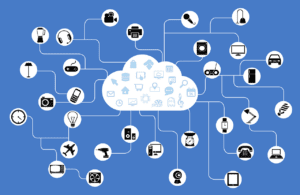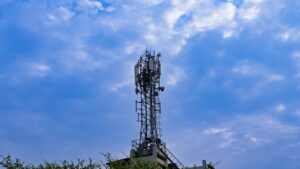A smart class is a modern teaching methodology that combines traditional classroom teaching with technology. In a smart class, teachers use multimedia tools such as videos, animations, and interactive whiteboards to teach students. The goal of a smart class is to create an immersive and interactive learning experience that makes learning more engaging and effective.
Advantages of Smart Classes
The advantages of smart classes are numerous. Here are some of the most significant benefits:
Improved Learning Outcomes
Smart classes provide students with an engaging and interactive learning experience that is more effective than traditional teaching methods. Students who learn in a smart class environment tend to retain more information and perform better academically.
Increased Student Engagement
Smart classes are designed to be interactive and engaging, which helps students stay focused and interested in learning. Multimedia tools such as videos, animations, and interactive whiteboards capture students’ attention and make learning more enjoyable.
Better Collaboration
Smart classes allow students to work together on projects and assignments, which promotes teamwork and collaboration. This helps students develop critical thinking and problem-solving skills while improving their communication and interpersonal skills.
Access to High-Quality Resources
Smart classes offer students high-quality learning resources, including digital textbooks, educational videos, and interactive learning tools. This makes learning more engaging and compelling and ensures that students have access to up-to-date information.
Components of a Smart Class
A smart class has several components that work together to create an immersive and interactive learning experience. Here are some of the most essential components:
Interactive Whiteboard
An interactive whiteboard is a digital board that allows teachers to display multimedia content and interact with it using a stylus or their fingers. Interactive whiteboards are a crucial component of smart classes, enabling teachers to create engaging and interactive lessons.
Projector
A projector displays digital content on a large screen or whiteboard. In a smart class, the projector displays multimedia content such as videos, animations, and presentations.
Digital Devices
Digital devices such as laptops, tablets, and smartphones are used in smart classes to access digital content and educational apps. Digital devices enable students to interact with the content and participate in activities and assignments.
Multimedia Content
Multimedia content such as videos, animations, and interactive tools are used to make learning more engaging and effective. Multimedia content is essential to smart classes as it helps students understand complex concepts and retain information.
How Does a Smart Class Work?
Smart classes combine traditional teaching methods with multimedia tools and digital devices. In a smart class, the teacher uses an interactive whiteboard and a projector to display multimedia content such as videos, animations, and presentations.
Students use digital devices such as laptops or tablets to access digital content and participate in interactive activities and assignments. The teacher can also use the interactive whiteboard to annotate and highlight important points, which helps students understand the material better.
Smart classes are designed to be interactive and engaging, so students can ask questions and participate in discussions during the lesson. Teachers can use online resources and tools to create quizzes and assessments to check the student’s understanding of the material.
Smart Class vs. Traditional Classroom
Smart classes differ from traditional classrooms in several ways. In a traditional classroom, the teacher primarily uses verbal communication and physical materials such as textbooks and blackboards to teach the students. In contrast, smart classes use digital tools and multimedia content to make learning more interactive and engaging.
In a traditional classroom, students often take notes and listen to the teacher without much participation. In a smart class, students can interact with the digital content, ask questions, and participate in discussions, which makes learning more collaborative and engaging.
Examples of Smart Class Technology
There are several examples of smart class technology that are used in modern classrooms. Here are a few examples:
Interactive Whiteboards
Interactive whiteboards are digital boards that allow teachers to display multimedia content and interact with it using a stylus or their fingers. Interactive whiteboards create engaging and interactive lessons that capture students’ attention.
Tablets and Laptops
Tablets and laptops are used in smart classes to access digital content and educational apps. Digital devices enable students to participate in interactive activities and assignments and collaborate with their peers.
Educational Apps
Educational apps are designed to make learning more engaging and effective. Educational apps provide students with interactive quizzes, games, and simulations that help them understand complex concepts.
Impact of Smart Classes on Student Learning
Smart classes have a significant impact on student learning outcomes. Studies have shown that students who learn in a smart class environment perform better academically and retain more information than those in traditional classrooms.
Smart classes promote active learning and student engagement, which helps students develop critical thinking and problem-solving skills. Smart classes also improve communication and collaboration skills, which are essential in today’s workforce.
Challenges of Implementing Smart Classes
Implementing smart classes comes with its own set of challenges. One of the primary challenges is the cost of implementing smart class technology, which can be expensive for some schools and educational institutions. Schools must also invest in high-speed internet and other infrastructure to support smart classes.
Another challenge is the lack of trained teachers who can effectively teach in a smart class environment. Teachers must be trained to use digital tools and multimedia content effectively to create engaging and interactive lessons.
Future of Smart Classes
The future of smart glasses is bright, with more and more schools and educational institutions adopting this innovative teaching methodology. Smart classes are expected to become more affordable and accessible, increasing their adoption rate.
With the advent of artificial intelligence and machine learning, smart classes are expected to become even more interactive and engaging. Digital tools and educational apps will become more advanced and sophisticated, making learning more effective and enjoyable.
How to Create a Smart Classroom
Creating a smart classroom involves several steps. Here are a few tips to help you create a smart classroom:
Invest in Smart Class Technology
Invest in smart class technology such as interactive whiteboards, projectors, and digital devices to create an immersive and interactive learning environment.
Train Teachers
Train teachers to use digital tools and multimedia content effectively to create engaging and interactive lessons.
Encourage Collaboration
Encourage collaboration among students by creating group projects and activities that require teamwork and communication.
Use Educational Apps
Use educational apps to make learning more engaging and effective. Educational apps provide students with interactive quizzes, games, and simulations that help them understand complex concepts.
Provide High-Speed Internet
Ensure your school or educational institution has high-speed internet to support smart class technology and online learning resources.
Encourage Active Learning
Encourage active learning by creating interactive activities and assignments that require critical thinking and problem-solving skills.
Evaluate and Assess Learning Outcomes
Evaluate and assess learning outcomes to determine the effectiveness of smart class technology and teaching methodology.
Conclusion
Smart classes are the future of education, providing an immersive and interactive learning experience that promotes collaboration, critical thinking, and problem-solving skills. With digital tools and multimedia content, smart classes make learning more engaging and effective.
Although implementing smart classes comes with its own challenges, such as cost and teacher training, the benefits far outweigh the costs. Smart classes are expected to become more affordable and accessible in the future with advances in technology and educational apps.
By investing in smart class technology, training teachers to use digital tools effectively, and encouraging collaboration and active learning, you can create a smart classroom that prepares your students for success in the 21st-century workforce.
FAQs
- What is the difference between a smart class and a traditional classroom?
- Smart classes use digital tools and multimedia content to make learning more engaging and interactive, while traditional classrooms primarily use verbal communication and physical materials.
- How do smart classes improve student learning outcomes?
- Smart classes promote active learning and student engagement, which helps students develop critical thinking and problem-solving skills.
- What are the challenges of implementing smart classes?
- The cost of implementing smart class technology and the lack of trained teachers who can teach effectively in a smart class environment are some of the primary challenges.
- What is the future of smart classes?
- Smart classes are expected to become more affordable and accessible with technological advances and educational apps.
- How can I create a smart classroom?
- Investing in smart class technology, training teachers to use digital tools effectively, and encouraging collaboration and active learning can create a smart classroom that prepares your students for success in the 21st-century workforce.





